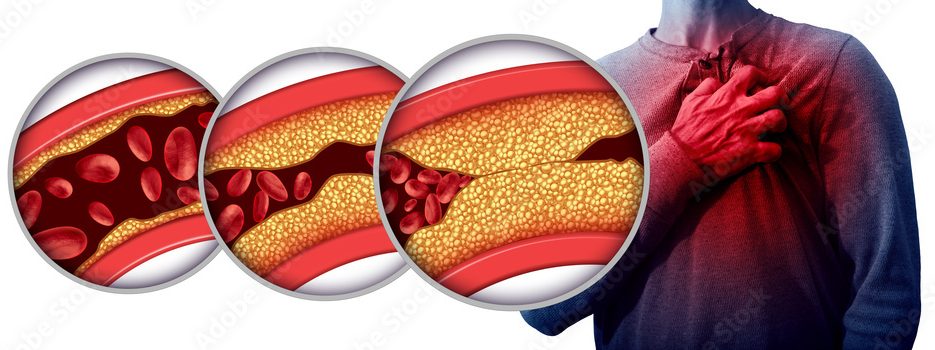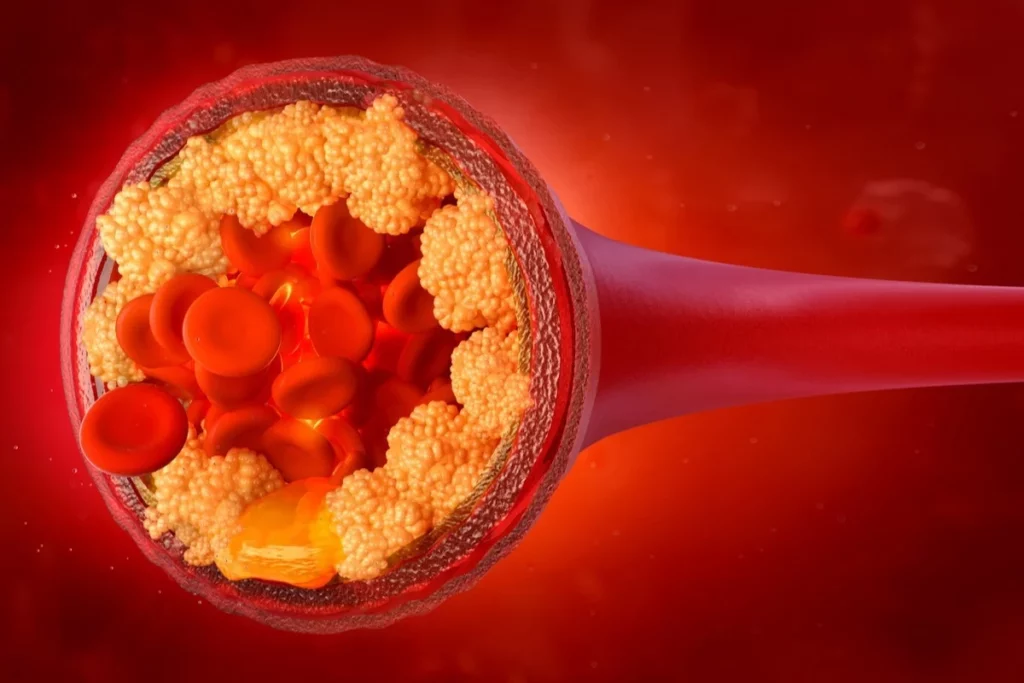


Cholesterol is a type of lipid (fat) that is essential for the proper functioning of the human body. It is found in every cell of the body and is used to build and maintain cell membranes, produce hormones, and aid in digestion. Cholesterol is produced naturally by the liver. However, it can also achieve through the consumption of certain foods, such as meat, dairy products, and eggs according to the Levels of Cholesterol.
Cholesterol travels through the bloodstream in the form of lipoproteins, which are combinations of cholesterol, proteins, and fats.
There are two main types of cholesterol:
LDL cholesterol is often known as “bad” cholesterol because it can contribute to the buildup of plaque in the arteries, which can lead to atherosclerosis and an increased risk of heart disease and stroke.
HDL cholesterol is often called “good” cholesterol. It help in remove excess cholesterol from the bloodstream and carry it back to the liver to be break down and eliminate from the body.
In addition to these two main types, there is also a third type of cholesterol which is very-low-density lipoprotein (VLDL) cholesterol. VLDL is a type of lipoprotein that carries triglycerides (a type of fat) from the liver to the rest of the body. Like LDL cholesterol, high levels of VLDL cholesterol in the blood can increase the risk of heart disease and stroke.
Total cholesterol is the sum of LDL, HDL, and VLDL cholesterol in the blood. It is important to maintain healthy level of LDL cholesterol and VLDL cholesterol while increasing level of HDL cholesterol to lower the risk of heart disease and stroke.
High cholesterol itself typically does not cause any symptoms, so it is often called a “silent” condition. However, high levels of LDL cholesterol in the blood can contribute to the buildup of plaque in the arteries, which can lead to atherosclerosis and an increased risk of heart disease and stroke. Atherosclerosis can progress slowly over time without any noticeable symptoms until it reaches a critical point and causes a heart attack or stroke.
Some people with very high cholesterol levels may develop xanthomas, which are fatty deposits that form under the skin, typically around the eyes or on the tendons of the hands and feet. These are not harmful but can be a sign of high cholesterol levels.
It is important to have regular cholesterol screenings to identify and manage high cholesterol levels before they lead to serious health problems. If you have risk factors for high cholesterol, such as a family history of high cholesterol or heart disease, or if you have other medical conditions such as diabetes or obesity, talk to your healthcare provider about when you should have your cholesterol checked and what steps you can take to maintain healthy cholesterol levels.
Cholesterol is an important substance in the body, but high levels of certain types of cholesterol, particularly LDL cholesterol, can be harmful and increase the risk of heart disease and stroke. When LDL cholesterol levels are too high, it can build up in the walls of arteries, forming plaque that can narrow the arteries and reduce blood flow to the heart and brain. This can lead to atherosclerosis, heart attacks, and strokes.
High level of LDL cholesterol in the blood can cause due to a variety of factors, including a diet high in saturated and trans fats, lack of exercise, smoking, and genetic factors. Other factors, such as diabetes, obesity, and certain medical conditions, can also contribute to high cholesterol level.

The recommended levels of cholesterol in the blood vary depending on the type of cholesterol. The American Heart Association recommends the following levels:
Less than 200 mg/dL (milligrams per deciliter)
Less than 100 mg/dL for people at high risk of heart disease, less than 130 mg/dL for people at moderate risk, and less than 160 mg/dL for people at low risk
60 mg/dL or higher is consider protective against heart disease. Less than 40 mg/dL for men and less than 50 mg/dL for women is consider low and increases the risk of heart disease
Less than 150 mg/dL
However, these are general guidelines and the target levels for an individual may vary depending on their personal health history, risk factors, and other medical conditions. It is important to discuss cholesterol level and goals with a healthcare professional to determine the appropriate target level and develop a plan to maintain healthy cholesterol level.
Maintaining healthy cholesterol levels is important for overall health and reducing the risk of heart disease and stroke. Here are some ways to help maintain healthy cholesterol levels:
Eating a diet that is low in saturated and trans fats and high in fiber, fruits, and vegetables can help lower LDL cholesterol levels. Choose lean protein sources such as poultry, fish, and legumes instead of red meat, and use healthy fats such as olive oil and avocado instead of butter or margarine.
Regular exercise can help raise HDL cholesterol levels and lower LDL cholesterol levels. Aim for at least 150 minutes of moderate-intensity exercise, such as brisk walking, per week.
Being overweight or obese can increase LDL cholesterol level and decrease HDL cholesterol level. Losing weight and maintaining a healthy weight can help improve cholesterol level.
Smoking can raise LDL cholesterol level and decrease HDL cholesterol level. Quitting smoking can help improve cholesterol level and overall health.
For some people, lifestyle changes alone may not be enough to lower cholesterol level. In these cases, medication such as statins may be prescribed to help lower LDL cholesterol level.
High cholesterol can be caused by a variety of factors, including:
It is important to identify and address the underlying causes of high cholesterol to help lower cholesterol level and reduce the risk of heart disease and stroke.